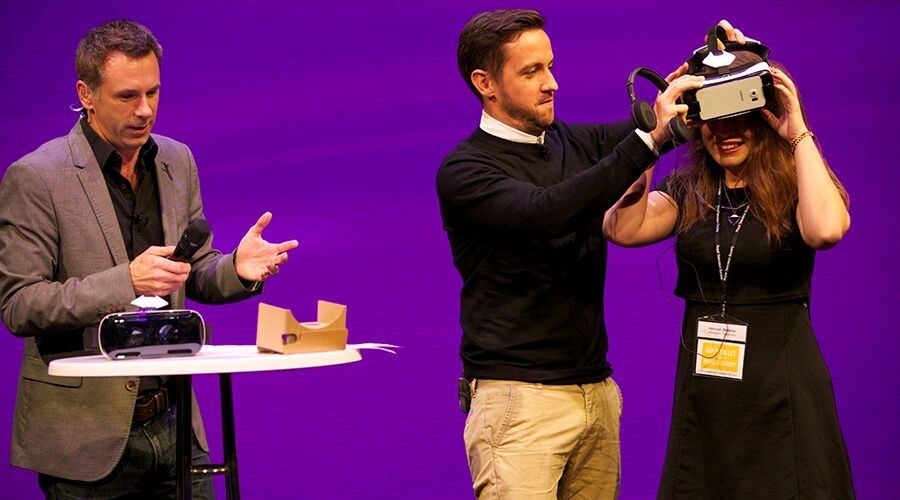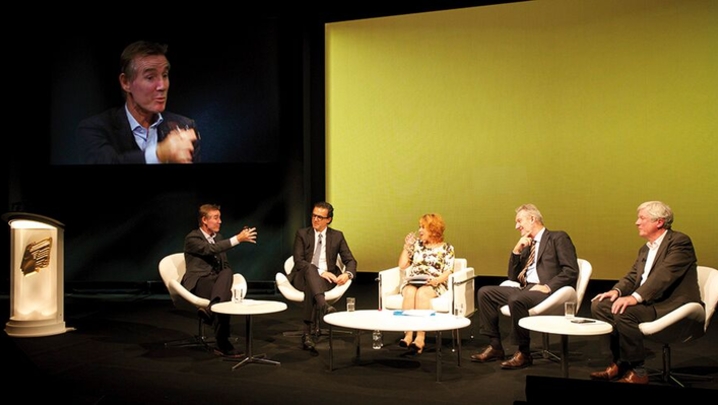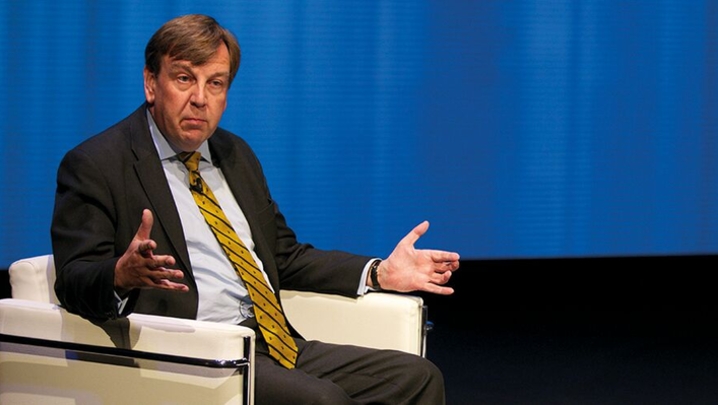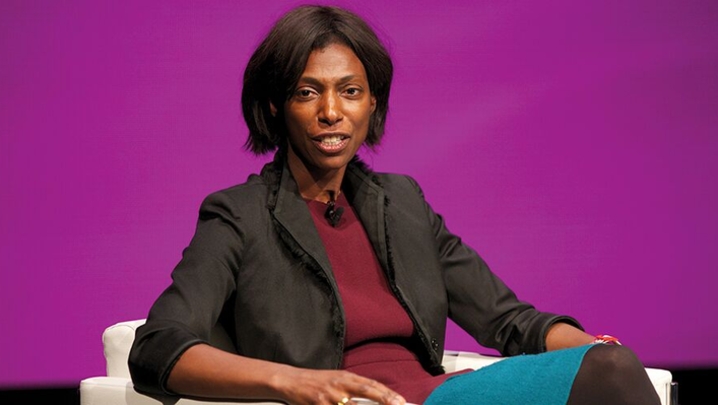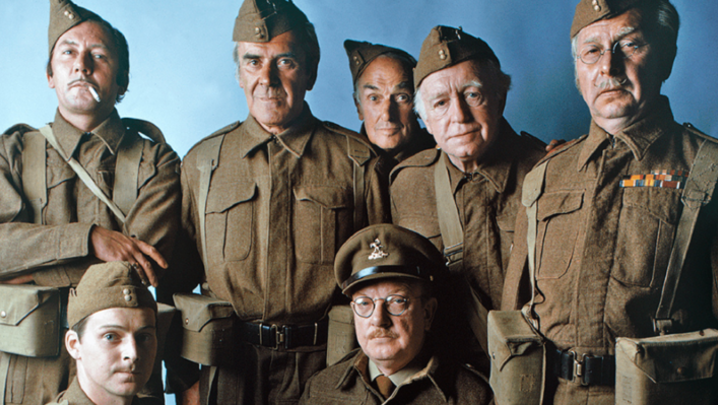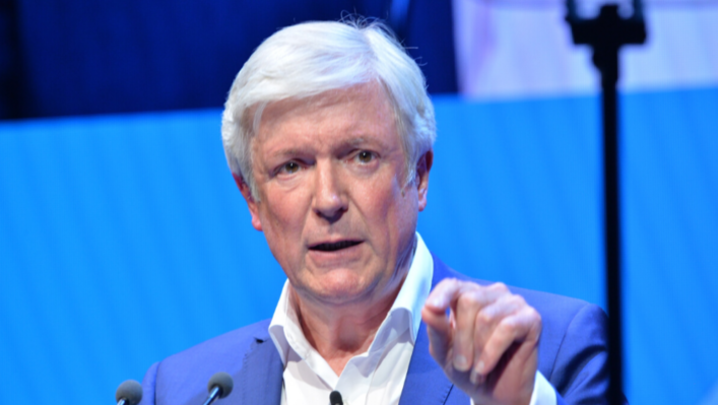Cambridge Convention 2015 Session Twelve: Click presenter Spencer Kelly gave RTS delegates a taste of how broadcasters might use mobiles to enhance the TV experience
Today, there is more power in your pocket than in Buzz Aldrin’s wildest dreams, thanks to the rise and rise of the smartphone. This was the starting point for a high-speed peek at how mobiles are changing and building on television content, from potentially enriching natural history programmes to explaining magic tricks.
Spencer Kelly, the engaging presenter of Click, the BBC’s weekly technology show, kicked off his talk by noting the ambivalence broadcasters currently felt about the second screen: the mobile phone could be a distraction, but it could be an enabler, too.
The key point is that smartphones come fitted with video cameras, so producers are inviting people to interact and send them user-generated content.
But smartphones and larger tablets also act as a second, rival, screen. As Kelly riffed: “It is changing the way we make our programmes because of this distraction… If we lose the audience’s attention for a second, they are not watching our programmes on TV.”
The most common effect of this effort to keep viewers’ attention is on how programmes are edited. “Ever more recaps, more trails, more throw-forwards. We are worried that the audience are not paying attention, so we have to remind them every few minutes,” he noted.
But another, more sophisticated, way under development is to marry television storytelling techniques with the camera technology on smartphones, to create immersive content.
This is now leading to experiments in virtual reality, marrying 360°, 3D shooting of scenes with ways to play out sequences via two lenses (“otherwise known as ‘strap the phone to your head’ in a helmet”, said Kelly). As you move your head, the world moves with it.
He referred to head sets such as the Oculus Rift and Samsung 6 Gear VR, which turn the smartphone into a portable virtual reality system.
One leading example this year has been an adaptation at London’s National History Museum of Sir David Attenborough’s First Life, the BBC Two series that animates fossils of extinct, ocean-dwelling species, using the Samsung 6 phone.
Phil Harper, Creative Director of Alchemy VR, which made First Life and the National History Museum experience, explained how it was done. He first tried – and discarded – a video-gaming format.
“When we heard about mobile we completely changed our tactics. By rendering the whole sequence out like a film, we create one image and wrap it around people’s heads,” he said. “If you do that twice, so that you have a spherical ball, one for the right eye, one for the left, you create a spherical, three-dimensional film.”
Asked about the challenges, he said: “The artists who make these [CGI] scenes are completely used to dressing the set or the frame. And everything that isn’t in frame is a disaster zone, it’s like a stage in the theatre, the mess is [offstage] on the side. But now, you have to make it look nice everywhere.
“I have always wondered whether TV spoils magic, with the trickery of using different cameras”, compared with live conjuring tricks.”
“We have used movement sparingly. Don’t do anything the audience can’t predict, so don’t jog them to the left or right [as users may feel nauseous]. The best subject matter, so far, is under the water or doing things that you simply can’t do in real life. You couldn’t dive in an ocean 500 million years ago.”
Volunteer Hannah Webster, who took to the stage to watch the First Life experience, reported back to the audience: “I was under the water with David Attenborough, which was great. It is quite unnerving because there is nowhere to go.”
Kelly moved on to sound effects for the helmets: as you move your head, the audio does, too. Richard Taylor, bearing the splendid title Virtual Reality Futurologist at BBC R&D, demonstrated it with a Radio 3 orchestral broadcast, recorded with extra microphones “so that we can mix it based on how you are looking around”.
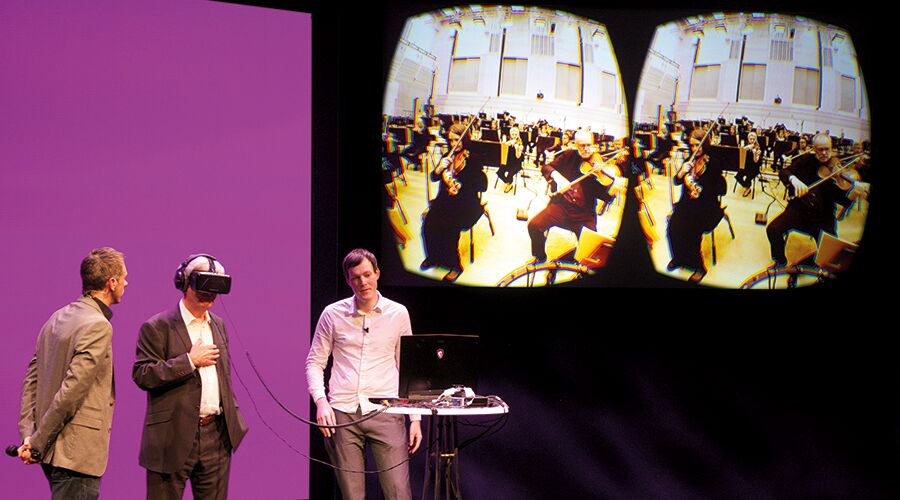
BBC Director-General Tony Hall was duly kitted out with a headset and audio track to take him into the middle of an orchestra in the conductor’s position.
Taylor said: “The experience of standing where the conductor should be is not something you ever get to enjoy, normally. A really important part of it is getting the sound of how it would be.” As the conductor brings in the different sections of the orchestra, the user turns to them and their musical contribution comes to the fore.
“Big cello sound, brass has just come in, double bass playing really beautifully, these cellos are just gorgeous,” Hall observed happily, momentarily lost in another world. “Fabulous experience.”
We then moved on to what was billed as the world’s first 360° magic trick. It was made specially for RTS delegates by Objective Productions’ Head of Magic, Anthony Owen, who works with Derren Brown.
Owen said: “The challenge was to create a magic trick that fools you initially when you see it on TV. When you see it in 360°, and download the app, you can see how we achieve the magic trick and you learn the special trick behind it.”
He first showed the magic trick as one would see it on television. Ben Hart, the magician, had orange concentrate in a glass and a cardboard tube. He covered the glass with the tube, then introduced a collapsible magician’s top hat. He squeezed, turned the tube upside down, and the glass vanished completely.
Volunteer Sir Peter Bazalgette was then invited to strap on the headset so that he was able to look at a replay of the whole studio scene and the magician’s assistants.
“I saw precisely how the trick was done and I won’t give anything away, except to say… it was very clever. I was duly deceived. You have taken the scales from my eyes and given me a religious experience,” he said.
Owen added that “all we wanted was entertaining content for people. Some magicians tend to be protective about magic. For me, I got into magic when I wrote to Johnny Ball with my stuff and enclosed a stamped addressed envelope.
“This is the modern version of that, putting something on television, engaging with the audience, [then] asking them to take the step of downloading an app and engaging with it. That is how future magicians are born and also other forms of entertainment.
“For me, the way of engaging with viewers, using the second screen, [is] the great opportunity to learn how a magic trick is done. It is more interesting than just asking people to watch something again.”
“I have always wondered,” said Kelly, “whether TV spoils magic, with the trickery of using different cameras”, compared with live conjuring tricks.”
Owen replied: “I work in both and, for me, it’s the difference between film acting and theatre acting. There are things that work better in different environments. I work a lot with Derren Brown; there are things you can do on television that you can’t do in theatre. And things that you can do live with someone that you can’t do on TV.”
As delegates left the hall they were able to collect Google cardboard headsets complete with a slot for whatever smartphone they owned. They could then download the virtual reality video from YouTube to see how the orange drink disappeared.
But before they did, Kelly concluded this way: “We would like to think that we will be able to use the phone in a really creative way to keep people’s attention.”
This session recalled the late Richard Attenborough’s much-quoted adage about television: “We are, after all, in show business.”
The session was presented by Spencer Kelly, Presenter, Click, with contributions from Phil Harper, Acting Creative Director, Alchemy VR, and Anthony Owen, Head of Magic and Executive Producer, Objective Productions. The producers were Simon Hancock and Peter Price.

